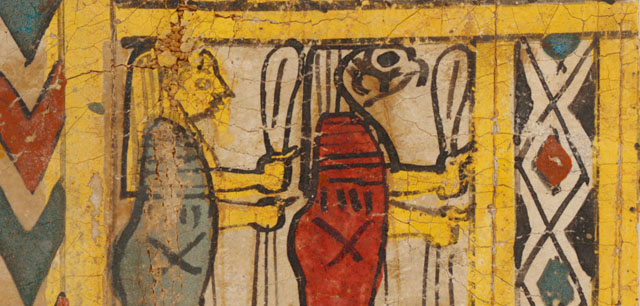Location
Heldenplatz, Neue Burg, Mitteltor, 1010 Vienna
papyrus@onb.ac.at
Opening Hours
Summer Opening Hours (June, July, August, September)
daily 10 a.m. – 6 p.m. , Thurs. 10 a.m.-9 p.m.
The life and afterlife of the Egyptians: In the Papyrus Museum there are about 200 objects from the Department of Papyri on display. The objects range from the oldest papyrus in the collection, a Book of the Dead from the middle of the second millennium BC, up to the latest papers, documents from the Islamic period in the 13th century AD, a representative choice of objects that give a vivid impression of the daily life and the culture of the inhabitants of Egypt of the times. In special exhibitions that are often changed focussed topics of the collection are shown.
The Papyrus Museum presents the written heritage of all those who lived throughout the millennia in the land of the Nile and put their imprint on its culture. Texts from everyday life and of literary creation give insights into many varied areas of life in antiquity. Topics such as „magic“, „medicine“, „legal and economic life“, „cult of the dead“ and many others are illustrated by various expositions in the Museum and made visible in their manifold nature. Beside written testaments of all types – from protective magic against bad illnesses on an amulet to a leasing agreement on an oil mill – objects are on display that make what is mentioned in the written texts comprehensible.
Particular high points of the exhibition are the complete portrait of a mummy of a woman from the 2nd century AD, that was artistically painted in a special technology (encaustic) on wood; and Taruma‘s Book of the Dead from the 2nd century BC. The two rolls written in hieratic script, in toto 8.6 metres long, have many drawings, among them scenes showing the priestess Taruma being led to face the tribunal of death. The Book of the Dead makes it possible to experience forcefully the religious concepts, but also the social norms of old Egypt. Another unicum is the fragment of a chorus song from the tragedy „Orestes“ of the classical Greek author Euripides. The papyrus from the period 200 – 180 BC shows text and music notes for songs and accomanying instruments, and it can not only be seen in the Papyrus Museum, but can be heard in a modern interpretation.

